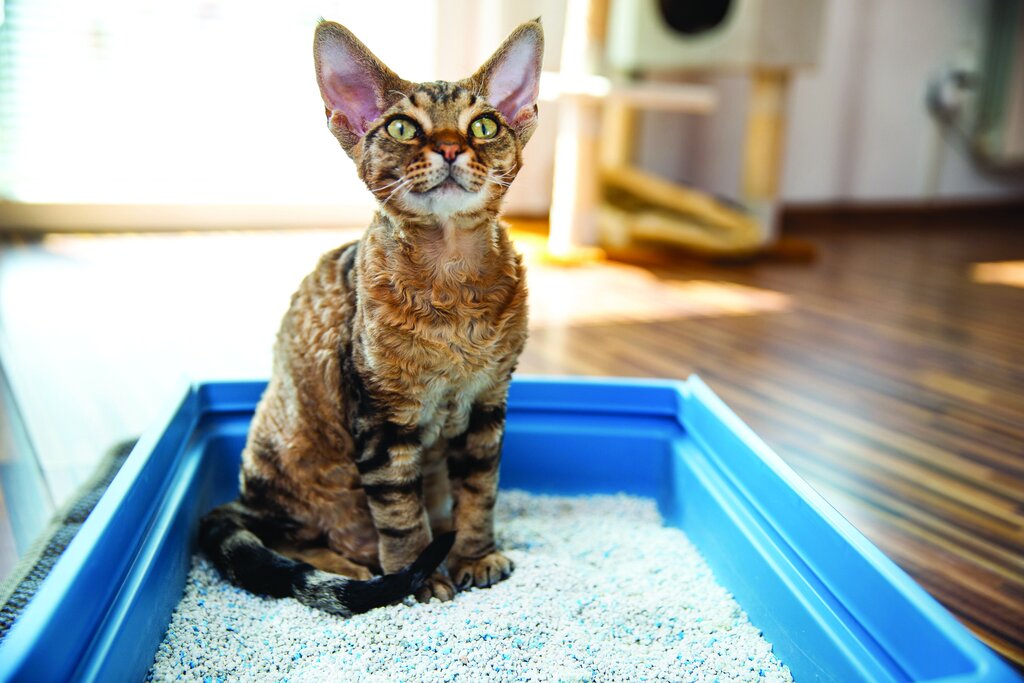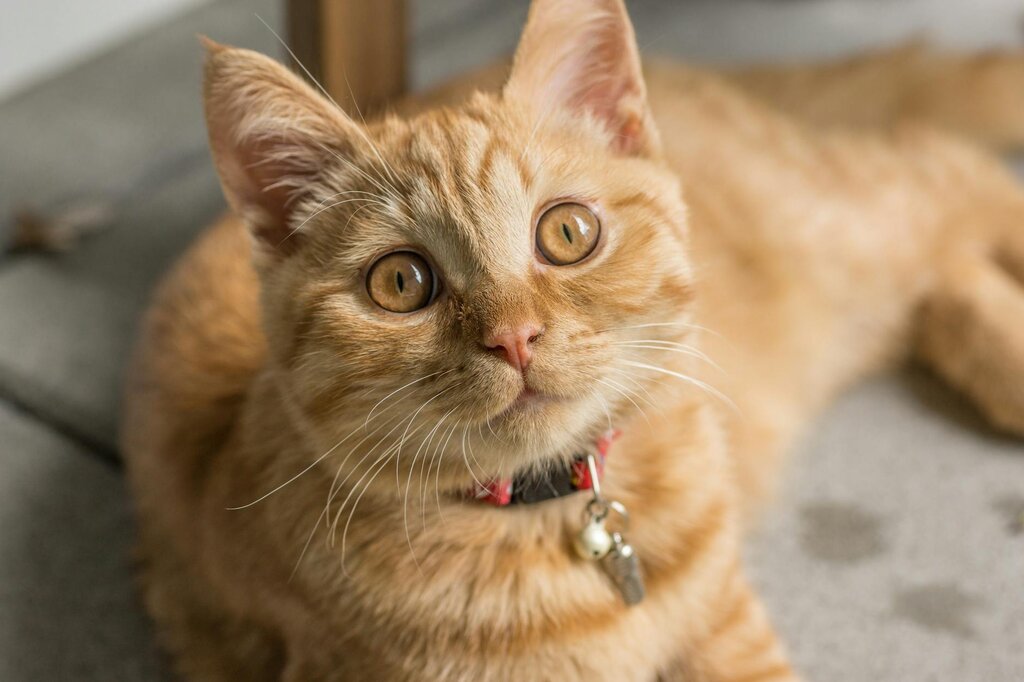Last Updated: 23/06/2025
Can you flush your cat's litter?
While flushing cat litter may seem like an easy solution it comes with a host of potential issues. In this article we deep dive into when and when not to flush your cat litter.
Author: Dr Gillian Hill BVSc (Hons)
Reading Time: 21 minutes - medium read
As a cat owner, you're likely to be familiar with the daily task of managing your pet's waste. Not only do you have to worry about keeping kitty litter from smelling up your home, but disposing of used cat litter in a way that's convenient and responsible isn't always simple.
While flushing cat litter may seem like an easy solution, it comes with a host of potential issues, from plumbing problems to environmental concerns. Moreover, not all cat litters are created equal -some are flushable, while others are not.
We explore this topic in depth, covering the pros and cons of, the risks of flushing, the types of non-flushable cat litter to avoid, and responsible disposal alternatives. Our aim is to help you make an informed and eco-conscious choice about cat litter disposal that safeguards not only your home but also the environment.
What is Flushable Cat Litter?

lushable cat litter, as the name suggests, is a type of cat litter specifically designed to be disposed of via a toilet or septic system. It is typically made from materials that dissolve or break down when exposed to water, thus minimising the potential for plumbing blockages.
Materials Used in Flushable Litter
Flushable litters are often made from natural and biodegradable materials. Some of the most common materials include:
Corn: Corn cat litter is another popular choice due to its biodegradable properties and good clumping ability. It is also generally dust-free, which can help to reduce mess.
Paper: Recycled paper kitty litter is lightweight and flushable. While it's not typically the best at clumping, it is easily disposed of via flushing and is often very dust-free.
Tofu: Tofu cat litter is a natural, biodegradable option known for its excellent absorbency and odor control. It’s also flushable in small amounts, offering a convenient and eco-friendly way to dispose of used litter.
Top Recommended Flushable Cat Litters
Pros & Cons Of Using Flushable Cat Litter
Pros
- Convenience - one of the major benefits of using flushable cat litter is the convenience it offers. It eliminates the need for bagging litter waste and taking it to the garbage bin.
- Reduced landfill waste - as flushable litter can be disposed of through the sewage system, it can help reduce the amount of waste going to the landfill.
- Eco-friendly - many flushable cat litters are made from natural, renewable resources, making them a more sustainable choice than clay-based litters.
Cons
- Potential plumbing issues - even though these litters are designed to break down in water, it can still cause blockages in some plumbing systems, particularly older pipes.
- Environmental concerns - these varieties can carry toxoplasmosis, a disease that can negatively affect marine life. In certain regions, it is illegal to flush cat litter due to these environmental concerns.
- Price - these litters often more expensive than their non-flushable counterparts, which could be a significant factor for some pet owners.
- Ease of Cleaning - flushable litters do not tend to clump, which does make cleaning urine from your cat's litter tray much more difficult. It is also unsuitable for use in litter tray systems that are designed for clumping litter like self cleaning litter boxes.
What Types Of Cat Litter Can't You Flush?

Clay Litter: Clay-based litters are one of the most common types of cat litter, but they are not suitable for putting down your toilet. This is primarily due to their clumping nature - when mixed with water, they form a hard, cement-like substance that can cause significant blockages in your plumbing system.
Crystal Cat Litters: Crystal litters (also known as silica gel litters), are popular due to their high absorbency and ability to control odours. However, these litters are definitely not safe for toilets. The crystals do not dissolve or break down in water and can lead to severe plumbing blockages. Additionally, silica gel is non-biodegradable, which means that if it ends up in waterways or in the ground, it doesn't decompose.
Pine or Wood Litters: While pine litter is a more environmentally-friendly alternative to clay and crystal-based litters, it is not suitable for flushing. Pine litter is made from pine pellets that disintegrate into sawdust when wet. However, the sawdust can form clumps that may cause clogs in your plumbing system. Moreover, the essential oils present in pine litter can be harmful to water ecosystems if they are flushed into the sewage system.
Best Way To Flush Cat Litter
Putting cat litter down your toilet should be approached with caution, as not all types are safe to flush, and even those labelled as flushable can potentially cause issues. If you choose to flush cat litter, consider the following tips:
- Confirm That Your Litter Is Flushable: Only flush cat litter that is labelled as flushable by the manufacturer. As previously mentioned, materials like clay, silica, and even some natural materials like pine are not safe for plumbing systems.
- Flush in Small Quantities: Only a small amount of litter should be flushed at a time. Trying to put large amounts can lead to clogs and plumbing issues.
- Be Aware of Your Plumbing System: If you live in an older home with older pipes, even appropriate types of litter can pose a risk. You should also consider whether your home uses a septic system or city sewage. Septic systems are not designed to process cat litter and, coupled with a new style low water volume toilet, this can lead to problems.
- Watch Out for Signs of Plumbing Issues: Keep an eye out for slow-draining toilets or other signs of plumbing problems. If you notice anything amiss, stop flushing litter immediately and call a plumber.
- Do Not Flush Litter If Your Cat Is Unwell: If your cat is on medication or has a parasitic infection, do not put their litter dow the toilet. Certain medications and parasites can contaminate water supplies and harm wildlife.
If you're leaning towards flushing as your go-to disposal method, it's a must to make sure your cat litter is specifically labelled as flushable. This usually means it's made from biodegradable materials, such as wheat, corn, paper, or grass seed. But remember, "flushable" doesn't always mean it's the right choice for you, your plumbing, or the environment. If you're set on flushing, make sure to get rid of your kitty litter in small quantities and keep a close watch for signs of plumbing trouble.
Further Reading
Want to read more? Check out our other articles:
History
Our experts continually monitor the health and wellness space and we update our articles when new information becomes available.
Dec 2023
Written by Dr Gillian Hill BVSc (Hons)Dr Gillian Hill BVSc (Hons)
Veterinarian
Dr. Gillian loves being able to provide depth and detail to pet parents questions, and give up to date, evidence based advice. She loves the variety of pets and inquiries she receives - she especially loves the 'curly' questions that require some research! Seeing the gorgeous photos that pet parents send through of their babies is a highlight of the day! Gillian enjoys to further her veterinary knowledge, and has completed further training in ultrasonography, behaviour and backyard poultry!

